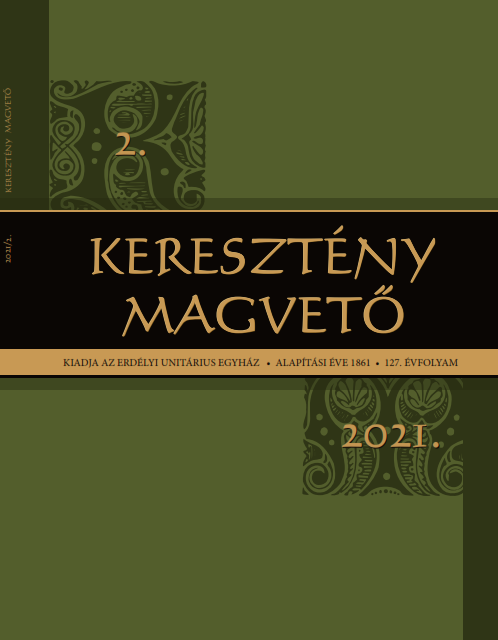Az erdélyi unitárius egyház megkésett konfesszionalizálódása és a lengyel testvérek a 17. század elején
Th e Late Confessionalization of the Transylvanian Unitarian Church and the Polish Brethren at the Beginning of the 17th Century
Author(s): Gizella KeserűSubject(s): Christian Theology and Religion, History of Church(es), Theology and Religion
Published by: Erdélyi Unitárius Egyház
Keywords: Accord (“Complanatio”) of Dés; antitrinitarianism; Dés (Dej); Disciplina Ecclesiastica (1626); nonadorantism; Polish Brethren; Poland; Raków; Socinians; Transylvania; Bethlen Gábor (1580–1629);
Summary/Abstract: Contemporaries of the Transylvanian and Polish antitrinitarians called them Socinians. The non-Hungarian literature still uses this name, although Polish antitrinitarians diff ered from the Transylvanians in geographical location, in a more articulated dogma and in social views. At the beginning of the 17th century Polish antitrinitarians had to accept the Socinian term because they formed a small group who had fewer legal rights compared to the Transylvanian Antitrinitarians. Transylvanian antitrinitarians, formed a larger group and had better legal situation than the Polish Brethren, and had fewer writings about religious tolerance, but they accepted a broader spectrum of religious views, they did not force upon anybody an obligatory creed, except when they were forced by external coercion. The Polish Socinian Valentin Radecke (?–1632) came to Kolozsvár (Cluj- Napoca) and in 1615 was elected bishop by the Transylvanian antitrinitarians. Prince Gábor Bethlen (1580–1629) and his Calvinist followers intervened into the peaceful diversity of the Transylvanian Antitrinitarians and renewed sectarian conflict. In 1619, the Calvinist bishop János Keserűi Dajka (1580– 1633) visited the regions where Calvinist and Unitarian people lived together, forcing Unitarians to leave their faith. Nonadorantism remained the strongest religious trend. Radecke and a few of his followers fought against this religious diversity by writing the Disciplina Ecclesiastica in 1626, which declared an end to the traditions of free elections of minister and free preaching in the unitarian church. Bishop Radecke’s wish to renew the Polish type of church discipline and ideological homogeneity, however, did not take root in Transylvania. The Polish Brethren could not attract followers amongst the Protestants in Europe, and the power of the nonadorantist wing in both Transylvania and Poland only grew stronger. Their arguments were worsened in 1638 by the destruction of Raków and the Accord (“Complanatio”) of Dés (Dej). In spite of the Polish Brethren’s arrival in Transylvania, religious diversity continued.
Journal: KERESZTÉNY MAGVETŐ
- Issue Year: 127/2021
- Issue No: 2
- Page Range: 150-174
- Page Count: 25
- Language: Hungarian

